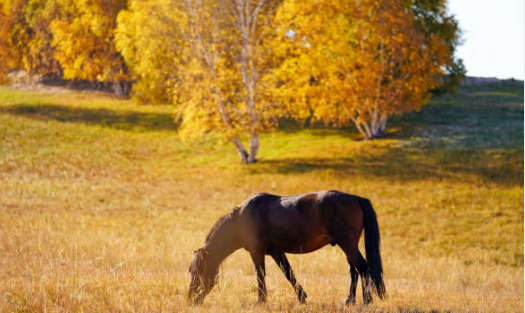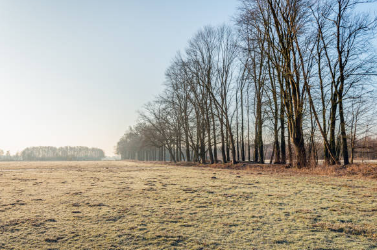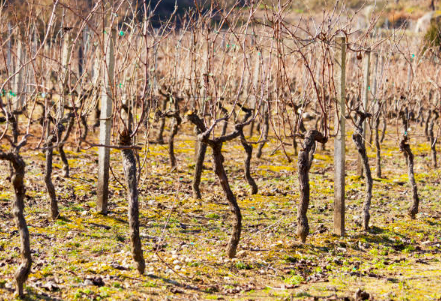
Dormant grass is both cool-season and warm-season grasses that naturally enter a state of dormancy during which they try to conserve water and nutrients. It’s a time to unwind after being under stress, which is typically brought on by cold winter weather or dry summer weather. Continue reading, you will learn more about dormant grass.
Table of Contents
What is Dormant Grass?
There is a small area known as the crown that is still alive even though the grass appears to be dead to the naked eye. The grass grows back into a healthy turf when the conditions are better or when there is enough water available.
Any grass can typically go dormant for up to six weeks without experiencing any negative effects. There may be a loss in the turf if the period extends and expect a loss of about 25% after every week of extension.
When Does Grass Go Dormant?
It’s important to know when the grass will most likely go dormant, stay dormant, and come out of dormancy so that you can prepare for those times. In order to accomplish this, let’s divide lawns into cool-season and warm-season categories since their respective growth cycles are distinct.
Cool Season Lawns
As you can see, cool-season grass grows best in the spring and fall of the year.
Because it gets too cold there in the winter, the grass dies back during this time. When soil temps fall consistently below 45 degrees, cool season grass will enter winter dormancy.
A lawn without irrigation will probably go dormant for a short time if there are persistent dry conditions in the summer because the weather can be too dry for cool-season grasses.
For those without irrigation systems, this is the riskiest time. Your lawn may become dead if there is a prolonged dry spell (lasting longer than three weeks) during this summer’s dormancy period. Irrigation systems or sun-blocking trees are most useful at this time of year.
Cool season grass options such as Turf Type Tall Fescue will also buy you a couple more weeks during drought conditions since this type of seed is more drought tolerant.
Warm Season Lawns
The hot summer months are when grass thrives on lawns that are grown in a warm climate. Because of this, warm-season lawns only really have one dormant period. This time spans from the fall when soil temperatures drop below 55 degrees to the late winter when they rise above 55 degrees.
It’s also important to note that in warm-season lawns, the top goes dormant while the roots continue to grow actively underground. This differs greatly from cool-season lawns where the ground becomes so cold that the roots also go dormant.
The benefits of irrigation can be seen in the fact that roots in warm-season lawns are still active during the winter. Although they don’t require as much water as they do during the growing season, occasional watering will still benefit them greatly.
How Can You Tell If Grass is Dormant Or Dead?
Due to how much its tan or brown color resembles dead or dying grass, dormant grass can be extremely frightening. But before you panic, make the following observations and perform the following tests:
Irrigate

Consider irrigating your lawn if you have the option. The lawn will quickly turn green after receiving much-needed watering if it is early spring or there is a drought in the summer.
Just remember that if soil temperatures are still too low after winter, grass will remain dormant and won’t begin to green up until soil temperatures warm up.
Other indications of spring include perennials breaking ground or buds beginning to leaf out. If this is taking place nearby, irrigating your lawn should cause it to begin to turn green.
Think of Temperature and Weather Conditions
Consider the recent weather when your lawn starts to turn brown.
During the summer, was there any dry weather? Are you now past the chilly winter season? Is it late fall and have the temperatures been extremely cold, perhaps even with some frosty mornings? All of these circumstances can make your grass go dormant, which explains the discoloration.
Observe the Consistency
Is your lawn covered in sporadic brown grass or is it all equally distributed?
During the winter dormancy period, dormant grass is typically fairly uniform in color across the lawn, or across significant portions of your lawn. If there are smaller, more noticeable patches, those areas most likely have dead grass, fungus, or another type of issue.
Due to soil composition and exposure to sunlight, some areas of your lawn may dry out more quickly during the summer dormancy of cool-season grass. If you have an irrigation system, you might have a few areas with insufficient coverage, which could cause those areas to exhibit dormancy as well.
Particularly during the winter dormancy period, cool-season grasses generally exhibit uniform dormancy.
However, for warm-season grasses like Bermuda and St. Augustine, during the brief transitions into winter dormancy and back out of dormancy in the spring, you can find some really weird patterns. If you notice any of these bizarre patterns, don’t panic. Check out this photo of Bermuda grass entering dormancy on a lawn.
How to Revive Dormant Grass?
Wait until the appropriate moment first. Dormancy occurs naturally and is required. Wait until the soil temperatures are warming up before beginning winter dormancy. Wait until the dry spell is over and your lawn is beginning to green back up before allowing cool-season lawns to go into dormancy in the summer.
Fertilize With Organic Fertilizer
Slow-release and non-burning organic fertilizers are available. Compared to synthetic fertilizers, they are much more understanding of stressed-out lawns. Milorganite is a great organic fertilizer.
Control Weeds
Chances are weeds such as clover and crabgrass has become a problem while your lawn was most vulnerable, especially during a summer dormancy period in cool season lawns. It is safe to use post emergent herbicides to control these weeds once the grass begins to green up again.

Reduce Traffic
Any foot traffic, including canines, should be avoided at all costs.
Irrigate
Both cool-season and warm-season lawns benefit greatly from irrigation as they emerge from their winter dormancy. You should actually keep watering warm-season lawns throughout the winter. However, keep in mind that while warm-season lawns are dormant on the surface, the roots are still active. You don’t need to water as frequently as you would during the growing season. It will be advantageous for your lawn because the roots can take up the water.
Don’t wait until it’s too late to prepare cool-season lawns for summer dormancy. Make as much irrigation as you can, even if that means setting up a hose with a few sprinklers. The only thing that can keep your lawn alive during the summer drought is water.
How to Repair Dormant Grass?
There might be some blotches or areas that remain brown after watering. Sodding is your best option if there are numerous areas that require replacement or if the areas are quite large. Rake up and get rid of all the brown, dead grass to achieve this. Lay down a thin layer of topsoil of good quality; for best results, we recommend BigYellowBags Nature’s Blend. To ensure that the sod is installed flat and prevent future problems, level the area. Put the sod down and water it right away and frequently. Check out our 7 simple steps for installing sod if you’re looking for a more detailed guide.
Reseeding might be the best option for small, sparsely populated areas. Filling in the small spaces will be easier and less expensive by using high-quality soil rather than sodding. Lay down a layer of high-quality soil after raking up and removing all of the dead grass. For the best results, we advise using BigYellowBags Professional Top Dressing Mix. Your seed will have the ideal growing environment, and it will also aid in covering up any unevenness in the areas. Spread the seed over the soil, then gently rake it into the ground. It won’t blow away or be eaten by birds if this is done. To ensure proper germination and growth, water the area frequently.
How to Prepare Your Lawn for Dormancy?
For winter dormancy
Applying a late-season fertilizer is beneficial. You need a fertilizer with a high nitrogen content for cool-season lawns. A fertilizer with a high potassium content and little to no nitrogen is what you want for warm-season lawns.
Both cool-season and warm-season lawns benefit from the final fertilizer application of the year. To check out more about what you should be doing for your last fertilizer application check out: Winterizer Fertilizer
Continue to water your lawn a few times per week during the warm seasons. The grass’s roots still require water despite the fact that the top layer is dead.
For summer dormancy
If you have the option, irrigating cool-season lawns is the best thing you can do. With sufficient irrigation, it will also completely prevent summer dormancy, which will stop grass from dying. If you can’t do that and your lawn is starting to look bad, you could raise the height at which you mow. By growing the grass long, you can create shade and retain moisture in the soil. Fertilize sparingly; it will only add to your stress.

Fertilizing with higher levels of potassium in the late spring/early summer is another thing you can do to help cool season lawns during the hot summer months. In times of drought, this will aid in protecting your cool-season lawn. However, if your lawn is already preparing for summer dormancy, avoid applying potassium. The lawn will then only become more stressed because it is already too late.
Due to the fact that warm-season lawns enjoy the heat, there shouldn’t be much of a summer dormancy period. Irrigating is the only effective way to help your warm-season grass if you experience extreme heat or drought-like conditions.
Conclusion on Dormant Grass
Your lawn may just be dormant if it appears brown rather than dead. The lawn basically “sleeps” during the dormant season. Both the cold winter months and the sweltering summer can experience it.
To conserve water and nutrients, grass shuts down and turns brown when it hibernates for the long, chilly winter. Grass also turns brown during the summer dormancy period.
As a result of extreme heat and drought, grass goes dormant in the summer. An intense drought will eventually kill it, but it can survive in this dormant state for three to four weeks without dying. With its unsightly brown tint, dormant turf is not very attractive to look at. Fortunately, the grass will turn green once the situation gets better.